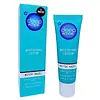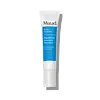What's inside
What's inside
 Key Ingredients
Key Ingredients

 Benefits
Benefits

 Concerns
Concerns

 Ingredients Side-by-side
Ingredients Side-by-side

Water
Skin ConditioningDimethicone
EmollientDiatomaceous Earth
AbrasivePropanediol
SolventHamamelis Virginiana Water
AstringentGluconolactone
Skin ConditioningGlycerin
HumectantPolyacrylate Crosspolymer-6
Emulsion StabilisingSaccharide Isomerate
HumectantSimmondsia Chinensis Seed Oil
EmollientHydroxyethyl Acrylate/Sodium Acryloyldimethyl Taurate Copolymer
Emulsion StabilisingSodium Benzoate
MaskingPotassium Sorbate
PreservativeParfum
MaskingSilica
AbrasiveGlycine Soja Oil
EmollientDisodium EDTA
T-Butyl Alcohol
PerfumingSodium Hydroxide
BufferingTocopherol
AntioxidantPolysorbate 60
EmulsifyingSorbitan Isostearate
EmulsifyingBeta-Sitosterol
Emulsion StabilisingCitric Acid
BufferingLinalool
PerfumingSodium Citrate
BufferingSqualene
EmollientLimonene
PerfumingAlpha-Isomethyl Ionone
PerfumingWater, Dimethicone, Diatomaceous Earth, Propanediol, Hamamelis Virginiana Water, Gluconolactone, Glycerin, Polyacrylate Crosspolymer-6, Saccharide Isomerate, Simmondsia Chinensis Seed Oil, Hydroxyethyl Acrylate/Sodium Acryloyldimethyl Taurate Copolymer, Sodium Benzoate, Potassium Sorbate, Parfum, Silica, Glycine Soja Oil, Disodium EDTA, T-Butyl Alcohol, Sodium Hydroxide, Tocopherol, Polysorbate 60, Sorbitan Isostearate, Beta-Sitosterol, Citric Acid, Linalool, Sodium Citrate, Squalene, Limonene, Alpha-Isomethyl Ionone
Salicylic Acid 2%
MaskingWater
Skin ConditioningAlcohol
AntimicrobialHamamelis Virginiana Water
AstringentPropanediol
SolventPentylene Glycol
Skin ConditioningGlycerin
HumectantSilica
AbrasiveButylene Glycol
HumectantPolyacrylate Crosspolymer-6
Emulsion StabilisingC12-15 Alkyl Lactate
EmollientAesculus Hippocastanum Seed Extract
Skin ConditioningAvena Sativa Kernel Extract
AbrasiveUrea
BufferingYeast Amino Acids
HumectantTrehalose
HumectantInositol
HumectantTaurine
BufferingBetaine
HumectantThymol
AntimicrobialTerpineol
MaskingHydroxyphenyl Propamidobenzoic Acid
Skin ConditioningButyrospermum Parkii Butter
Skin ConditioningShea Butter Ethyl Esters
Emollient4-T-Butylcyclohexanol
MaskingDisodium EDTA
Sodium Hydroxide
BufferingSalicylic Acid 2%, Water, Alcohol, Hamamelis Virginiana Water, Propanediol, Pentylene Glycol, Glycerin, Silica, Butylene Glycol, Polyacrylate Crosspolymer-6, C12-15 Alkyl Lactate, Aesculus Hippocastanum Seed Extract, Avena Sativa Kernel Extract, Urea, Yeast Amino Acids, Trehalose, Inositol, Taurine, Betaine, Thymol, Terpineol, Hydroxyphenyl Propamidobenzoic Acid, Butyrospermum Parkii Butter, Shea Butter Ethyl Esters, 4-T-Butylcyclohexanol, Disodium EDTA, Sodium Hydroxide
 Reviews
Reviews

Ingredients Explained
These ingredients are found in both products.
Ingredients higher up in an ingredient list are typically present in a larger amount.
Disodium EDTA plays a role in making products more stable by aiding other preservatives.
It is a chelating agent, meaning it neutralizes metal ions that may be found in a product.
Disodium EDTA is a salt of edetic acid and is found to be safe in cosmetic ingredients.
Learn more about Disodium EDTAGlycerin is already naturally found in your skin. It helps moisturize and protect your skin.
A study from 2016 found glycerin to be more effective as a humectant than AHAs and hyaluronic acid.
As a humectant, it helps the skin stay hydrated by pulling moisture to your skin. The low molecular weight of glycerin allows it to pull moisture into the deeper layers of your skin.
Hydrated skin improves your skin barrier; Your skin barrier helps protect against irritants and bacteria.
Glycerin has also been found to have antimicrobial and antiviral properties. Due to these properties, glycerin is often used in wound and burn treatments.
In cosmetics, glycerin is usually derived from plants such as soybean or palm. However, it can also be sourced from animals, such as tallow or animal fat.
This ingredient is organic, colorless, odorless, and non-toxic.
Glycerin is the name for this ingredient in American English. British English uses Glycerol/Glycerine.
Learn more about GlycerinHamamelis Virginiana Water is made by distilling parts of the witch hazel plant. You can also call this ingredient "witch hazel water".
The name 'Hamamelis Virginiana Water' refers to the distillation product used in cosmetics. On the other hand, 'Witch Hazel' refers to the active drug ingredient.
Unless it is specified to be non-alcohol, many types of witch hazel ingredients are distilled in denatured alcohol.
Witch Hazel water is an astringent, anti-inflammatory antioxidant, and antibacterial ingredient.
It contains tannins. Tannins have a drying effect when used on skin by constricting proteins. The constriction also minimizes the appearance of pores.
Both the tannins and fragrance found in witch hazel may be skin-sensitizing.
Witch hazel water gets anti-inflammatory and antibacterial properties from its catechin and gallic acid content.
Indigenous groups have used witch hazel to help treat inflammation in North America for centuries.
Learn more about Hamamelis Virginiana WaterPolyacrylate Crosspolymer-6 is a texture enhancer and pH adjuster.
It is be used to thicken water-based products and create a gel-texture with a velvet feel.
One manufacturer claims this ingredient to have a pH range of 2-8 and to be biodegradable.
Learn more about Polyacrylate Crosspolymer-6Propanediol is an all-star ingredient. It softens, hydrates, and smooths the skin.
It’s often used to:
Propanediol is not likely to cause sensitivity and considered safe to use. It is derived from corn or petroleum with a clear color and no scent.
Learn more about PropanediolSilica, also known as silicon dioxide, is a naturally occurring mineral. It is used as a fine, spherical, and porous powder in cosmetics.
Though it has exfoliant properties, the function of silica varies depending on the product.
The unique structure of silica enhances the spreadability and adds smoothness, making it a great texture enhancer.
It is also used as an active carrier, emulsifier, and mattifier due to its ability to absorb excess oil.
In some products, tiny microneedles called spicules are made from silica or hydrolyzed sponge. When you rub them in, they lightly polish away dead skin layers and enhance the penetration of active ingredients.
Learn more about SilicaSodium Hydroxide is also known as lye or caustic soda. It is used to adjust the pH of products; many ingredients require a specific pH to be effective.
In small amounts, sodium hydroxide is considered safe to use. However, large amounts may cause chemical burns due to its high alkaline.
Your skin has a natural pH and acid mantle. This acid mantle helps prevent harmful bacteria from breaking through. The acid mantle also helps keep your skin hydrated.
"Alkaline" refers to a high pH level. A low pH level would be considered acidic.
Learn more about Sodium HydroxideWater. It's the most common cosmetic ingredient of all. You'll usually see it at the top of ingredient lists, meaning that it makes up the largest part of the product.
So why is it so popular? Water most often acts as a solvent - this means that it helps dissolve other ingredients into the formulation.
You'll also recognize water as that liquid we all need to stay alive. If you see this, drink a glass of water. Stay hydrated!
Learn more about Water